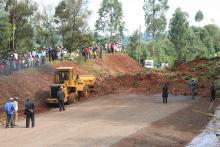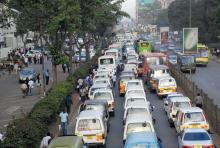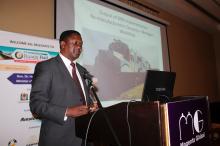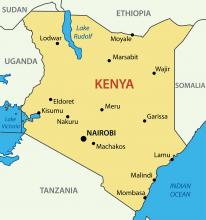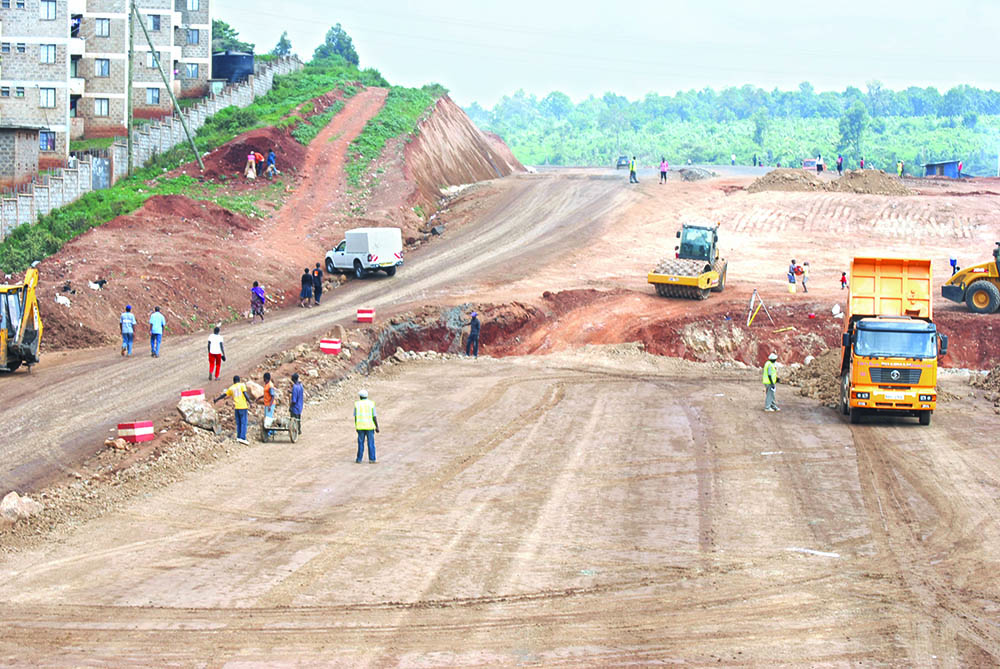
The economies of East Africa have been growing in the last five years, exerting pressure on the existing road network whose expansion has not kept pace with the increasing gross domestic product (GDP) largely because of inadequate financing. In spite of the growing economies in East Africa, governments in the region continue missing revenue collection targets while increasing both recurrent and development expenditure with more reliance on external financing to meet their infrastructure demand amid growing interest in public private partnership (PPP) as the other funding option.
Tanzania's economic growth was estimated at 6.5% for 2017 with analysts projecting a 6.7% and 6.9% growth in 2018 and 2019 respectively, while in Kenya the growth was about 5% in 2017 with projections of 5.6% and 6.2% for 2018 and 2019 respectively. Both Uganda and Rwanda expect an economic expansion of 5.9% and 7.2% respectively for 2018 up from 4.8% and 6.1% respectively in 2017. Further growth is projected by the two countries in 2019 at rate of 6% and 7.5% respectively.
Each country in the region has prioritised infrastructure expansion, upgrading and maintenance in their respective national budgets that continue posting increasing deficits that hamper these government's capacity to finance capital projects especially in the road sector.
Currently, unpaved roads comprise the largest share in East Africa's road network while the list of those that are not maintained or impassable continues to grow longer even with increased financial support from the World Bank, African Development Bank and a mix of loans from China, Japan, European Investment Bank and AFP. For example in Tanzania, only 9,951km or 27% of the country's 36,258km classified national road network is paved. The country's State-run roads agency, Tanzania National Roads Agency (TANROADS) dreams of paving an additional 4,000km by 2022.
During the 2018/19 fiscal year, Tanzania plans to spend an estimated US$655 million on development of 62 roads linking districts and regions as part of the $1.8 billion budget allocation for the Ministry of Works, Transport, and Communication.These road projects are part of TANROADS' 2016-2021 five-year strategic plan under which the State-run agency will construct, upgrade and rehabilitate a total of 188 roads.
Within the five years, TANROADS, which has spent $2.1 billion on road development and maintenance since 2015, also hopes to construct or upgrade 76 trunk roads of 3,398km and 112 regional roads of 5,3318km. An additional 1,683km of trunk roads will be rehabilitated and 29km of regional roads by 2021. These are in addition to the construction of 21 bridges, rehabilitation of two others and construction of 18 flyover/interchanges/junctions over the five-year period.
“Road development in Tanzania faces the challenge of inadequate funding for maintenance and development and a huge road rehabilitation backlog,” Eng Patrick Mfugale, CEO of TANROADS told delegates at the 10th East & Central Africa Roads & Rail Infrastructure Summit 2018 organised by Magenta Global in Dar es Salaam in early October. In neighbouring Kenya, an estimated 2,000km of intercity highways were under construction in 2017 with another 500km expected to be procured before the end of the 2017/18 fiscal year, according to the country's National Treasury.
In 2017 another 500km of urban roads were at different stages of construction or procurement as the government looks forward to invest in 3,500km of rural roads to add to the 2,500km that were at advanced phases of procurement, according to the government's delivery unit.
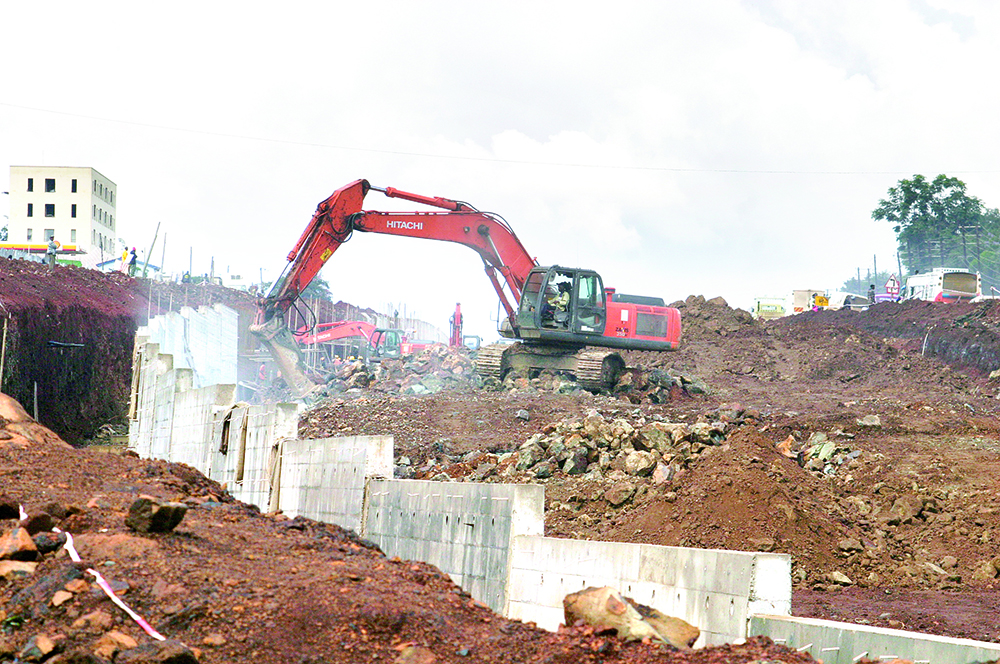
For the last 24 months, the Kenya National Highways Authority (KeNHA) has given priority to the design, financing, procurement and construction of critical roads that are expected to support the anticipated 5.8% economic growth,
For example, KeNHA plans to incorporate the private sector in the design, financing, development, maintenance and operation of the Nairobi – Mombasa Expressway, Nairobi – Nakuru – Mau Summit Road, dualling of Bomas of Kenya – Kiserian – Kona Baridi and construction of Wajir – Samatar and Rhamu – Mandera Road and Lamu – Garissa – Isiolo.
However, KeNHA director general Peter Mundinia says the roads agency is aware of the various setbacks facing the road expansion plan but is implementing measures to mitigate their impact.
“High cost of land acquisition, delays in relocation of services along the road reserve to facilitate road expansion coupled with encroachments on road reserves remains a challenge to the delivery of road infrastructure,” he said in KeNHA's 2017 annual report.
Mundinia also said KeNHA “faces huge pending bills mainly resulting from inadequate budgetary allocation for road development and vandalism of road pavement and road furniture.”
In the 2018/19 fiscal year, National Treasury Cabinet Secretary Henry Rotich allocated $1.1 billion for ongoing road construction projects as he urged Kenyan-based institutional investors such as pension funds to put their cash into PPP road projects.
“These funds have potential to play a critical role, particularly in providing local currency financing for PPP projects thereby significantly de-risking projects from foreign currency funding exposure,” he said.
Uganda and Rwanda have also identified several road projects for financing/implementation in 2018. For Uganda, finance minister Kasaija Matia said in June there are 806km of roads that are partially upgraded to tarmac and which will need to be completed before July 2019 in addition to the construction of 600km of new ones and upgrading another 400km within the period. He announced $162 financing for the maintenance of national, district, urban and community roads during the 2018/19 fiscal year.
Landlocked Rwanda will also construct, upgrade or rehabilitate priority roads of 269km in 2018/19 in addition to an additional 534km of feeder links. However, the inability by East African governments to raise adequate funding for road construction, upgrading and rehabilitation plans have held back some of the region's flagship transport projects except for those that attracted international financing or gone through the complex PPP procurement processes.
In 2018-19, Tanzania expects to borrow an estimated $1.4 billion from external sources for what finance minister Phillip Mpango says is a strategy “to speed up on implementation of infrastructure projects.” The country unveiled a $14.2 billion budget in June for 2018/19 out of which $5.4 billion has been allocated for development expenditure.
Rwanda on the other hand will also rely on $446 million in external grants and $451 million in external loans to achieve its $2.7 billion 2018/19 national budget goals. Finance minister Uzziel Ndagijimana said in June the government has allocated $1 billion for its development budget in the current fiscal year.
By mid-2018, Uganda had reported a budget deficit equivalent to 4.8% of the country's $27.9 billion economy and which minister Matia attributed to “increase in development expenditure and other investments which rose 8.8% of the GDP from 7.8% in 2017.”
Uganda, which had accumulated $10.53 billion in public debt comprising of $7.18 billion from external sources and $3.35 billion in domestic borrowing, expects to finance its 2018/19 budget deficit from both concessional and non-concessional loans.
Similar national budget financing is being experienced in Kenya where the National Treasury estimates the deficit at nearly $5.4 billion, an equivalent of more than 5.7% of the country's GDP. A large share of this deficit, $2.8 billion, will be financed from external sources in addition to what Minister Rotich said will be Kenya's “diversification of the sources of funding for our development budget over the medium by maintaining a presence in the international capital markets.”
Previously in mid-2014, the National Treasury said Kenya had issued a Sovereign Bond for general budget support including funding of infrastructure and for the repayment of the Syndicated Loan amounting to US$ 600 million plus accrued interest of US$ 4.6 million.
“We will seek to maximise our access to official development assistance on concessional terms, while limiting use of non-concessional and commercial external borrowing for development projects with high financial and economic returns,” said Rotich.
Across East Africa, governments are experimenting with a mixture of PPPs such as concessions, build-and-operate, joint ventures or special purpose vehicles, as demand for road sector financing becomes dire.
“The PPP model would help address the acute mismatch between traffic needs, existing infrastructure and financial deficits,” said Erastus Mwongera, chairman of the board of directors at KeNHA.
Some of the projects that Kenya has set aside for development under a PPP model include the 2nd Nyali Bridge in Mombasa, the Nairobi – Nakuru – Mau Summit Highway and Nairobi-Thika Highway. Although the latter project is already in use, the tolls are yet to be introduced probably because it is politically unpopular. Other projects that are likely to be developed under the PPP model are Nairobi – Mombasa Expressway, Bomas of Kenya – Kiserian – Kona Baridi, Wajir – Samatar and Rhamu – Mandera Road and Lamu – Garissa – Isiolo.
“We have invested significantly in the preparation of these PPP projects and we are eager to partner with world-class developers, operators and financiers in order to deliver the projects for the benefit of all in Kenya and in the region at large,” said Mwongera.
In June 2018, Rwanda gazetted the PPP guidelines partly to “inform the private sector of the intent of government to systematically develop PPP projects and competitively procure private partners while ensuring transparency, fairness, non-discrimination, and accountability of the institutions involved in the PPP process."
This followed the enactment of LAW No. 14/2016 of 02/05/2016 that governs the PPP projects and which also spells out the “PPP arrangements and potential sectors, institutions to be involved, processes for procurement of PPP projects, delineation of roles for institutions and institutionalisation of governance framework for PPPs.”
Top of the agenda for Rwanda's road sector PPP plan is the tarmacking of an additional 500km by the end of the current financial year.
“The PPP funding mechanism is a crucial tool to complement government resources for revitalising the overstretched transport infrastructure,” said Isack Kwamwelwe, Tanzania's Minister for Works, Transport and Communications during Magenta Global's regional infrastructure summit in October.
“Tanzania has established the PPP policy and legal framework to guide delivery of public goods in support of PPPs such as the PPP Policy (2009), Act (2010), Regulations (2011), and later on the revised PPP Act (2014) and Regulations (2015),” he said.
But the PPPs may not be a panacea to East Africa's road sector cash problems at least according to a review of this financing option by international consultancy Deloitte.
Although PPPs can help “attract private investment and corporate expertise” this funding option “is not always - or even often - the best solution to government funding challenges” according to Bornstein, Dixon, Flynn and Pankratz in their article 'Funding the future of mobility' in the Deloitte Review of July 2018.

